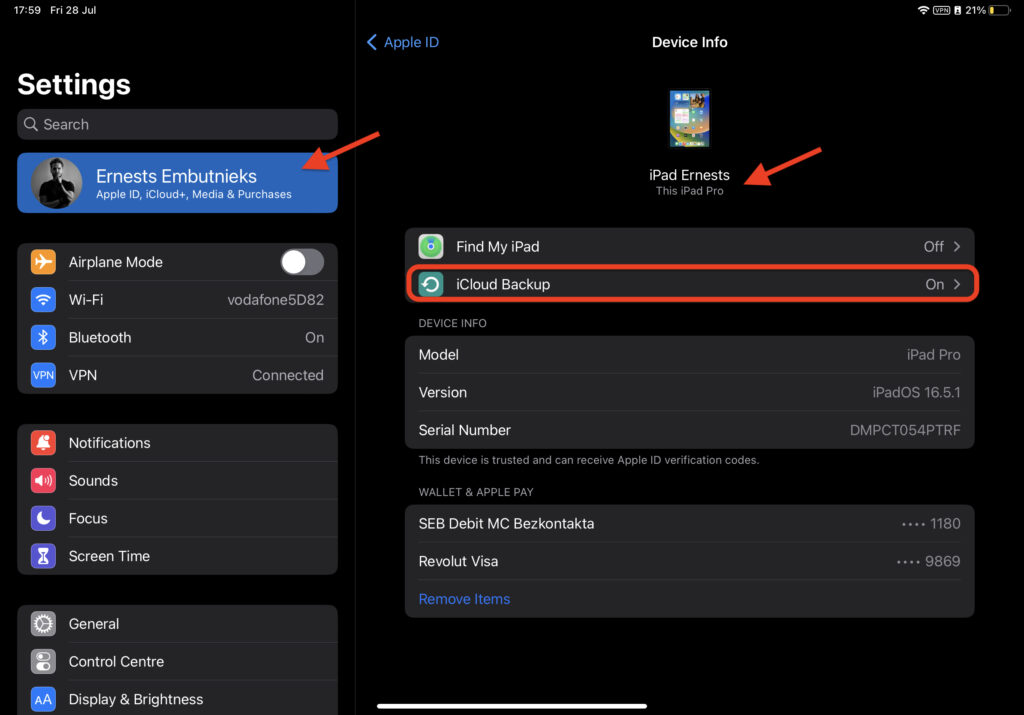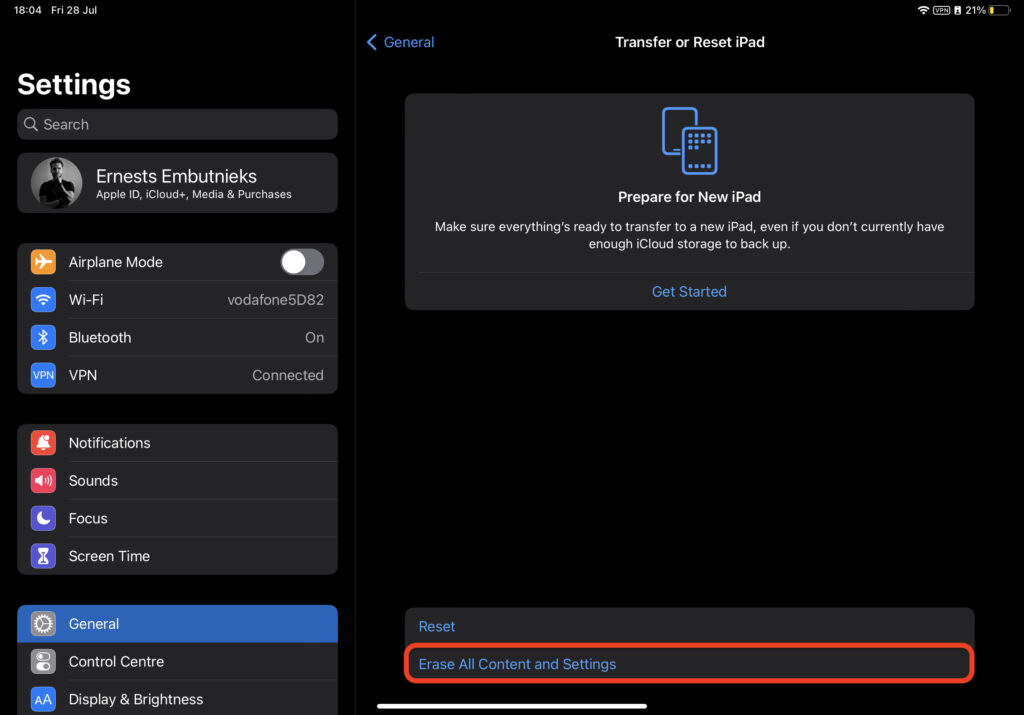If you’re experiencing issues with your Apple iPad, performing a reset can often resolve them. Whether it’s freezing, crashing apps, or acting sluggish, a reset can give your device a fresh start. We’ll show you how to do it, step by step.
When Should You Try a Reset?
Consider trying a reset if you encounter any of the following scenarios:
- Your iPad is frozen and unresponsive.
- Apps are crashing frequently.
- The device is running slow/lagging.
- You’re experiencing connectivity issues.
- There are unusual behaviors or errors that persist despite troubleshooting.
Things to Do Before Hard Resetting Apple iPad
Before initiating a reset, it’s a good idea to take some precautionary steps to ensure a smooth process and prevent data loss. Better safe than sorry.
- Backup Your Data: Use iCloud or iTunes to backup your important data, such as photos, videos, contacts, and documents.
You need to stay connected to Wi-Fi until the backup is finished. If your device says it doesn’t have enough iCloud storage space to complete the backup you will need to delete something or buy additional iCloud storage.
How to Reset iPad (All Models)
Performing a reset on your iPad is a straightforward process. Follow these steps to perform a soft reset:
- Press and Hold Buttons: Simultaneously press and hold the Power button and the Volume Up Button. On Older iPad models, press and hold the Power button and Home button. Until the Apple logo appears on the screen.
How to Do a Factory Reset on Apple iPad
If a soft reset doesn’t resolve your issues, you may need to perform a factory reset. Keep in mind that a factory reset will erase all data and settings from your iPad, restoring it to its original state. Here’s how to do it:
- Backup Your Data: Ensure that you’ve backed up all your important data, as mentioned earlier.
- Open Settings: Go to Settings > General.
- Reset iPad: Scroll down and select “Reset.”
- Erase All Content and Settings: Tap “Erase All Content and Settings.”
- Confirm: Enter your passcode if prompted, and confirm your decision to erase all data and settings.
- Wait for Reset: Your iPad will now erase all data and settings and restart automatically. This process may take some time.
How To Factory Reset iPad Without Apple ID Passcode
If you need to factory reset your iPad but don’t have the passcode, you can still do so using iTunes or Finder on a computer. Here’s how to factory reset your iPad without a passcode:
For macOS Catalina and later (using Finder):
- Connect Your iPad to the Computer:
- Use a USB cable to connect your iPad to your computer.
- Open Finder:
- Open a Finder window on your Mac.
- Put Your iPad into Recovery Mode:
- For iPads with Face ID: Quickly press and release the Volume Up button, then quickly press and release the Volume Down button. Press and hold the Top button until your iPad restarts and you see the recovery mode screen.
- For iPads with Home button: Press and hold both the Home button and the Top (or Side) button at the same time. Keep holding them until you see the recovery mode screen.
- Locate Your iPad in Finder:
- In the Finder window, select your iPad when it appears.
- Restore Your iPad:
- When you see the option to Restore or Update, choose Restore. Finder will download the software for your iPad. If it takes more than 15 minutes, your iPad will exit recovery mode, and you’ll need to repeat steps 3 and 4.
- Once the software is downloaded, follow the on-screen instructions to complete the restore process. This will erase all data and settings on your iPad and install the latest iOS version.
For macOS Mojave and earlier or Windows PC (using iTunes):
- Connect Your iPad to the Computer:
- Use a USB cable to connect your iPad to your computer.
- Open iTunes:
- Open iTunes on your Mac or PC. Make sure you have the latest version of iTunes installed.
- Put Your iPad into Recovery Mode:
- For iPads with Face ID: Quickly press and release the Volume Up button, then quickly press and release the Volume Down button. Press and hold the Top button until your iPad restarts and you see the recovery mode screen.
- For iPads with Home button: Press and hold both the Home button and the Top (or Side) button at the same time. Keep holding them until you see the recovery mode screen.
- Locate Your iPad in iTunes:
- In iTunes, you should see a message saying that it has detected an iPad in recovery mode.
- Restore Your iPad:
- When you see the option to Restore or Update, choose Restore. iTunes will download the software for your iPad. If it takes more than 15 minutes, your iPad will exit recovery mode, and you’ll need to repeat steps 3 and 4.
- Once the software is downloaded, follow the on-screen instructions to complete the restore process. This will erase all data and settings on your iPad and install the latest iOS version.
Using iCloud (Find My iPad Enabled)
If Find My iPad is enabled on your device, you can use iCloud to erase it remotely:
- Go to iCloud.com:
- Open a web browser and go to iCloud.com.
- Sign In:
- Sign in with your Apple ID and password.
- Select Find iPad:
- From the All Devices drop-down menu at the top, select your iPad.
- Erase Your iPad:
- Click Erase iPad to erase all data and settings on your iPad.
This will erase all content and settings on your iPad, and you will be able to set it up as new.
Different Types of Resets
Understanding the different types of resets available for your iPad can help you troubleshoot effectively. Here are the main types:
Differences Between Reset and Reboot
- Reset: A reset involves restarting your iPad to resolve minor software glitches or issues. It does not erase any data or settings.
- Reboot: A reboot, also known as a soft reset, involves restarting your iPad by turning it off and then back on again. It can help refresh the device’s system and resolve temporary issues.
Differences Between Reset and Factory Reset
- Reset: A reset, as mentioned earlier, involves restarting your iPad without erasing any data or settings. It’s often used for troubleshooting minor issues.
- Factory Reset: A factory reset erases all data and settings from your iPad, restoring it to its original factory condition. It’s typically used as a last resort for resolving major software issues or preparing the device for resale.
How To Reset iPad For New Owner (Wipe)
Whether it’s an upgrade, a gift, or just time for a fresh start, we’re here to guide you through the seamless process of resetting your iPad for the new owner.
Below you will find required steps to reset it for the new owner. So, grab your iPad, and let’s wipe your iPad clean for the new owner.📱
Step 1: Back Up Important Data
You’ll be wiping everything from your iPad in the last step, so backing up important data is quite an important step. You can also leave this step. You don’t have any important data. However, if you have any data, then you need to do it. Usually, you can back up your important data in two different ways.
- Through iCloud Backup
Backing Up your data from iCloud is pretty easy and automatic. Here’s how you can backup your all data your data through the iCloud service. (it’s my personal favorite way because it’s the quickest and easiest)
Here’s how you can use iCloud:

- Open Setting and Tap on the left panel with your name
- From here, you see a bunch of different options, tap on iCloud from these options
- Now, from here, choose what you want to back up. (Most of them are selected by default)
- Then tap iCloud backup, and it’ll take you to the next slide where you’ll need to turn on iCloud
- Once you turn that iCloud button on, you’ll instantly see an option to backup now
- Tap on backup now, and it’ll start to backup
Note:
If you’re getting unable to backup, it means you already have taken up a lot of space on iCloud and now you’re out of iCloud space, to solve this issue, you can either upgrade your iCloud plan or cut the unnecessary file from your backup.
- Through iTunes
Another fantastic option for creating backups is by using iTunes, which happens to be a great way to protect your data and, as an added bonus, won’t cost you a single penny!
It’s like having a tech-savvy guardian angel looking out for your files. Well, minus the wings and halo, of course.
So, if iTunes is really your thing, then I guess I should now tell you how you can back up your files with that.
- Download iTunes on your Windows PC or Macintosh
- Update your iPad to the latest software
- After doing so, connect your iPad to your computer
- Tick options like “This Computer and “Encrypt Local Backup”
- Then, select on the icon present at the top-left and click on Back Up Now
Wait until the backup process is complete. Once done, unplug your iPad and get ready to reset it.
Step 2: Signing Out of iCloud
It’s better to disable your iCloud account. It’s important because, after selling it, you don’t want the next owner to face any problems and most important you don’t want to give the new owner any of your data.
So here’s how you can do it:
For iOS 10.3 and later:
Here’s a how it’s done for iOS 10.3 and later:
- Open the Settings application on your iPad
- Tap on your profile picture at the top of the Settings menu
- Scroll down to the bottom and select “Sign Out”
- You will have to enter your Apple ID password. Enter it and move on
- Tap on “Turn Off” to sign out of your Apple ID on this iPad
For iOS 10.2 or earlier:
Here’s a guide for older iPad models:
- Open the Settings application on your iPad
- Tap on “iCloud” and then select “Sign Out”
- Tap on the “Sign Out” button again, and then choose “Delete From My iPad” to remove your iCloud data from the device
- Enter your Apple ID password when needed to continue
- Now, go to “iTunes & App Store” in the Settings app
- Tap on your Apple ID and select “Sign Out” to complete the process
Step 3: Factory Reset Your iPad
Now, the most essential step is to factory reset your iPad and wipe everything clean.
So, if you have backed up your data, let’s proceed toward the factory reset part.

- In the setting, tap Generals
- Then, scroll down to the bottom until you see Reset
- Tap “Reset”
- You’ll be seeing some options; from there, tap “Erase All Content And Settings.”
- Then Select “Erase Now.”
- Enter your password if it ask
- Then select Erase
After doing that, your iPad will start resetting itself, wiping all data, and making itself like it was from the box. Your iPad will restore all of its factory settings in about 5-15 minutes.
Once done, you’ll see the Apple Logo screen with Hello. If you’re getting this hello, it means your iPad is completely reset.
How To Change iPad Owner Without Losing Apps (Family Sharing Method)
If you are giving away your iPad to a friend or a family member and they want to keep some of the apps you have purchased from the App Store, there is a way you can make this work.
Follow my step-by-step guide to change the owner of the iPad without losing paid apps with the family sharing method.
Step 1: Setup Family Sharing
- On your iPad, open the “Settings” app.
- Sign in with your Apple ID, if you aren’t already.
- Tap on “Family Sharing.”
- Choose “Set Up Your Family” and follow the onscreen instructions.
- Make sure to turn on the option “Share Purchases with Family.”
Step 2: Invite Family Members
- In the “Settings” app on your iPad, go to “Family Sharing.”
- Select “Add Family Member.”
- Enter the email address of the new owner and follow the onscreen instructions.
As soon as the new owner confirms the invite he will have access to all your purchased apps.
How Do I Remove The Previous Owner’s Apple ID From My iPad?
– Contact the Previous Owner: Reach out to the previous owner and ask them to sign in to their iCloud account on the iPad.
– Turn Off Find My iPad: To do this, the previous owner should go to “Settings” > [their name] > “Find My” > “Find My iPad” and toggle it off. They may need to enter their Apple ID password to confirm.
– Sign Out of iCloud: Still in the “Settings” app, the previous owner should scroll down and tap “Sign Out” at the bottom of the screen. They’ll be prompted to enter their Apple ID password and can choose to keep a copy of their data on the device or delete it.
– Erase the iPad: After signing out of iCloud, the previous owner can go to “Settings” > “General” > “Reset” > “Erase All Content and Settings.” This will erase all data on the iPad, including their Apple ID.
– Complete the Setup Process: Once the iPad has been erased, it will restart and display the initial setup screen. Now, you can set up the iPad as if it were a new device, including associating it with your own Apple ID.
FAQ
Is There a Reset Button on Apple iPad?
No, there isn’t a physical reset button on the iPad. You can perform a reset using button combinations or through the Settings app.
Will Reset Delete My Data?
A soft reset (reboot) will not delete your data or settings. However, a factory reset will erase all data and settings from your iPad, so be sure to backup your data beforehand.
How Long Does Reset Last?
A soft reset (reboot) typically takes only a few seconds to complete. A factory reset may take longer, depending on your iPad model and the amount of data stored on the device.
How Long Does Factory Reset Last?
The duration of a factory reset varies depending on factors such as the iPad model and the amount of data to be erased. It can take anywhere from a few minutes to over an hour to complete.
Will This Guide Apply To All iPads?
Yes, this guide applies to all the latest iPads and older iPads. As well as all models, whether you have an iPad, iPad Mini, iPad Air, or iPad Pro, this guide will help you make soft reset, hard reset, and reset without an Apple ID pass.
How do I change my iPad’s Ownership?
If you want to change the owner of the iPad, it is most important to first backup all data, then erase everything from it.
To change the owner, you’ll need to go to settings, then tap on your Apple ID and sign out.
Once done, you need to add the new owner’s Apple ID.
Once added, you’ll be done changing the owner.
Will erasing my old iPad affect my new one?
No, simply erasing your data from your old iPad won’t directly impact your new one.
When you perform a factory reset or erase all content and settings on one iPad, it won’t harm the other device.
So, don’t worry about your new device; you’ll get all of your data back if you have made a backup.
I'm a writer and editor in iPads & Android Tablets, Windows Tablet section. I'm passionate about technology, especially about tablets. I'm on a mission to assist people in discovering their ideal tablets. In addition, I'm dedicated to producing helpful how-to guides and sharing top-notch tips and tricks. In my early carrier I founded and became and editor at worldoftablet and have been a guest author at many other tech blogs. In wolfoftablet I'm focusing on iPads, Tablets, Apple Pencil, Apps, Reviews, Buyers Guides and Tablet Accessories. In free time I like to play games on my PS5 or iOS.
